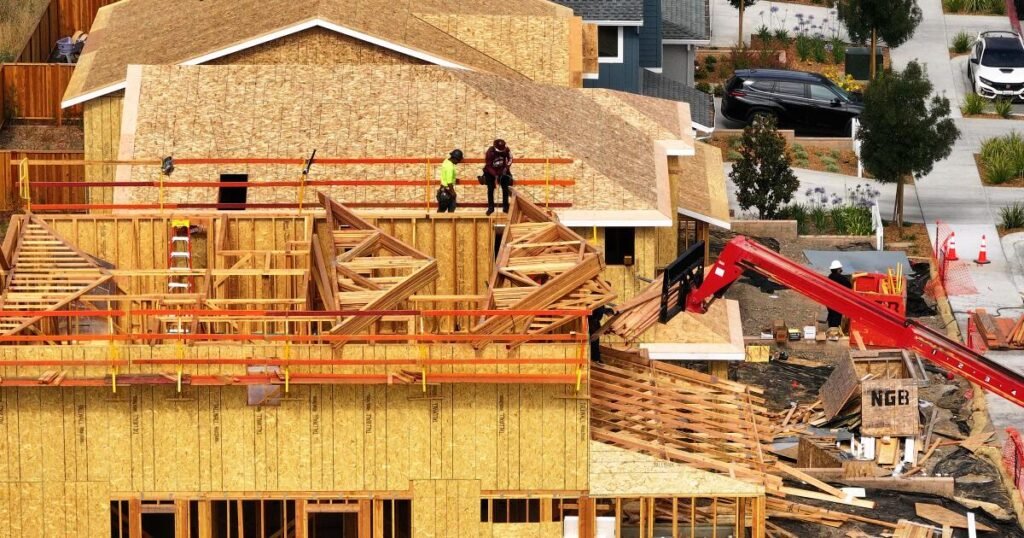California’s CEQA Reform: A Bold Move by Gov. Newsom
This week, Governor Gavin Newsom addressed a controversial topic in California politics, aiming for shifts within the state’s home construction sector.
Since the California Environmental Quality Act (CEQA) was enacted in 1970, Newsom has allowed the legislature to pursue what experts argue is a crucial reform. This change involves moving away from CEQA for low to mid-rise developments in urban areas. No longer will lengthy soil studies, potential shadow impacts, or increased traffic assessments be mandatory. The threat of lawsuits from disgruntled neighbors is also diminished.
By sweeping these rules aside, despite the political hurdles, Newsom aims to eliminate barriers that have hindered home building for years. He believes this measure will ultimately improve residents’ ability to secure affordable housing in California. “The world we created is working against us,” Newsom noted. “We’ve got to adapt.”
Californians won’t have to wait long to experience the changes brought about by the governor’s decision.
In the near term, the reform may revolutionize development in California cities, though its immediate effect on construction remains to be seen. Various factors, including interest rates and labor availability, will play a significant role in whether homes get built. What has changed, however, is the reduction of outside group influence, paving the way for healthier community development.
A critic has likened CEQA to a “law that swallowed California,” highlighting its vast implications.
Essentially, CEQA mandates that project backers disclose environmental impacts and attempt mitigation before receiving approval. But the initiation of CEQA requires developers and local governments to conduct extensive research, often leading to frustration and delays. Opponents can exploit this uncertainty to their advantage; sometimes, threatening a CEQA challenge becomes a tactic to be heard in local discussions. In some situations, the law has been used to address issues that are only marginally relevant to environmental concerns.
For instance, a gas station owner in San Jose filed a lawsuit against a competing station that wished to expand. Pro-life advocates challenged a proposed clinic in San Francisco, while Berkeley homeowners sued the University of California regarding increase enrollment and its potential impact on traffic and noise.
Over time, CEQA processes became integral to California’s development landscape, with all key stakeholders well-acquainted with its mechanisms. Los Angeles Mayor Karen Bass recalled using CEQA to fight against a liquor store opening in the ’90s as a community organizer. Notably, the billionaire developer Rick Caruso—a typical critic of CEQA—was embroiled in a lawsuit related to a major redevelopment project near his shopping mall.
The labor organization representing construction workers has been deeply invested in CEQA discussions at the state level. Their leaders contend that if developers gain relief from CEQA, they should share the benefits with workers in the form of better wages and benefits.
This union opposition was enough to block Governor Jerry Brown’s 2016 effort to limit CEQA challenges for urban housing developments. Although a version of his bill passed a year later, developers could only proceed if they agreed to union-level wages.
The dance between lawmakers and labor groups continued, and in 2022, the California Carpenter’s Council separated from the state’s Building and Construction Trade Council, pushing for stricter labor standards in response to various legislative efforts.
Yet, housing construction still lagged. The number of permits issued has fallen significantly short of what Newsom pledged in 2017 during his campaign. Newsom and legislators knew they had to take more action.
“We’re trapped, and we have nothing to show for it,” remarked Congress member Buffy Wicks (D-Oakland) during the signing ceremony.
This year, Wicks proposed a change to CEQA that would eliminate labor requirements for urban housing development, moving it through the legislative process. In May, Newsom championed Wicks’ bill alongside additional CEQA reforms, aiming to fast-track them as part of the state budget.
As budget negotiations intensified, Newsom made a rare move by connecting approval of the entire spending plan to the passage of CEQA reforms, forcing legislators to consider the budget’s fate alongside their positions on housing development.
The outcome was a streamlined CEQA exemption for home builders in urban multifamily zones, with union-level wages required only for low-income or high-rise housing. Current labor requirements for other types of construction will still be governed by state and local laws.
However, the significance of this reform for home building remains unclear. Research findings on CEQA’s effects are mixed. One study from a UC Berkeley law professor indicated that less than 3% of housing projects faced CEQA lawsuits over three years, while another reported tens of thousands of residential units challenged in just one year. Yet, many advocates argue it’s challenging to measure the law’s potential chilling effect on development.
“This represents a monumental shift, moving from invisibility to recognition in California’s political landscape,” stated Mott Smith, chairman of the Infill Builders Council, which advocates for urban housing. “You can engage with this contentious issue and survive to tell the tale.”
Residents opposed to a proposed five-story apartment near their homes will need to navigate the complexities of this 55-year-old environmental law to halt the development.
















